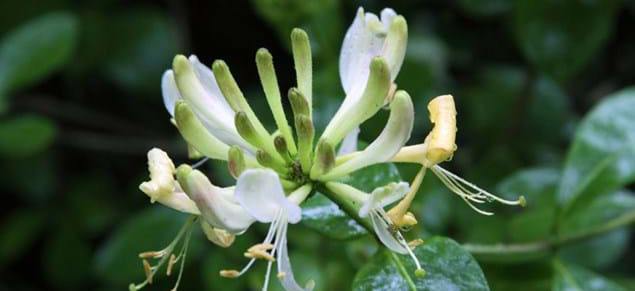
Honeysuckle
There are hundreds of species of Honeysuckle (Lonicera) that grow in temperate regions all over the world. In addition to growing wild, many species are popular and common garden plants thanks to their flowers, sweet perfume, and ability to attract hummingbirds and insects.
This article will focus on the most common and – importantly – the primary medicinal Honeysuckle: Lonicera japonica, known as Japanese or Chinese Honeysuckle.
Other edible varieties are Woodbine / Woodbine Honeysuckle / Common Honeysuckle or European Honeysuckle (Lonicera periclymenum) and Orange Honeysuckle or Western Trumpet Honeysuckle (Lonicera ciliosa).
The History of Honeysuckle
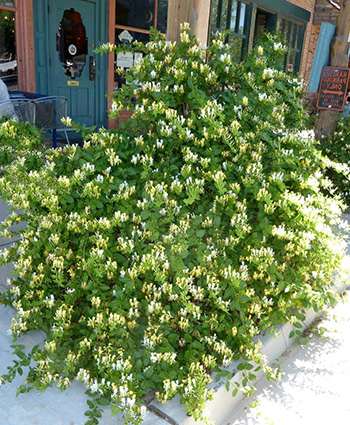 Japanese / Chinese Honeysuckle flowers were used in traditional Chinese medicine for a variety of ailments of the digestive system – particularly the large intestine and stomach – and the lungs. It was also used to treat fevers and inflammation and to draw toxins including those from snake bites. There were also topical remedies used on ulcers and skin infections.
Japanese / Chinese Honeysuckle flowers were used in traditional Chinese medicine for a variety of ailments of the digestive system – particularly the large intestine and stomach – and the lungs. It was also used to treat fevers and inflammation and to draw toxins including those from snake bites. There were also topical remedies used on ulcers and skin infections.
Elsewhere in the world, Native Americans boiled the flowers of local Honeysuckle varieties in water to treat wounds and speed up healing. For the Ancient Greeks, the flowers were the symbol of love. The Ancient Celts in Scotland assigned spiritual meanings to the flowers which they hung up near livestock to ward off evil.
By the Middle Ages, European physicians used Honeysuckle for its anti-inflammatory, antibacterial, and antispasmodic properties to treat gastric and respiratory infections, arthritis and rheumatism, liver inflammation, rashes, and skin diseases. This continued through to the late 19th century.
Where This Plant Is Found
Honeysuckles are found in temperate zones in both the northern and southern hemispheres, with different species being native to different places. Most species, however, originate in China.
Some 40 species grow in North America and Europe and others are found in southern Asia, North Africa, and the Himalayan region. Japanese Honeysuckle originates in both Japan and Korea and is thought to have been introduced into the US at the beginning of the 19th century. This plant has also been naturalized in Australia and southern Africa.
Honeysuckle grows with such vigor and speed that it has been officially classed as invasive in some areas. As a garden plant, it needs to be controlled so that it does not get out of control or move beyond the garden.
Related: The Complete Map of Edible Plants: Find Out What You Have in Your Area! (Video)
How to Identify Japanese Honeysuckle
Honeysuckle is a woody climber or twining vine. Some species can grow to more than 30 feet / 9 meters in length. It is a deciduous plant and therefore loses its leaves in winter, especially in colder areas. In the wild, it grows up trees and over shrubs. In gardens, this plant usually requires a trellis or some other structure to support it.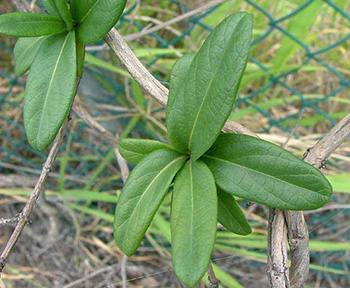
- Leaf: The leaves are in pairs on opposite sides of the stalk and are light green turning darker as they age.
They are oval and have short stalks and reach a length of 1 – 3 inches / 2 ½ – 7 ½ centimeters. Japanese Honeysuckle leaves are darker on the upper side than underneath.
- Stem: Young stems or tendrils are pinkish or reddish and slightly furry. The older stems thicken and turn reddish or pale brown. The hair is replaced by brown bark.
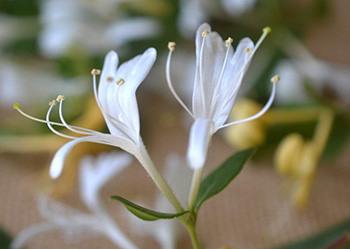
- Flower: This species blooms throughout summer and into fall.
The highly scented, paired, white, or pale-yellow flowers are not closed tubes or trumpet-shaped as the petals flare out forming two curled lips.
The stamens are highly visible.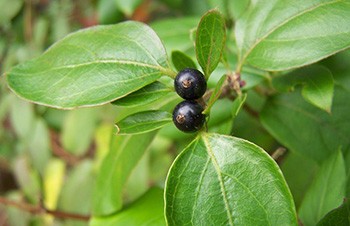
- Fruit: Japanese Honeysuckle berries are black, round, and shiny.
While birds enjoy them, they are toxic to humans.
Honeysuckles are wonderful plants to attract wildlife to gardens as their sweet nectar is loved by butterflies, bees, and hummingbirds.
How to Grow Honeysuckle
It should be noted that Japanese Honeysuckle (L. japonica) has been declared an invasive species in some US states. Therefore, if you live in North America, it’s a good idea to ensure you can grow this variety in your area. If you can’t, and you want an edible Honeysuckle, consider Common Honeysuckle (L. periclymenum) or Orange Honeysuckle (L. ciliosa).
Honeysuckle requires well-drained but moist soil and partial shade. Ideally, this climber likes its roots in the shade and the stems in sun. They need some suitable structure to climb up but keep them under control or they will wrap themselves around whatever they can reach.
There are two options when it comes to obtaining Honeysuckle plants:
- Seeds: These creepers can be propagated from seeds that are contained in the berries.

Extract the seeds from the berries and plant them straight away. Start seeds in pots and store these somewhere cold (590 Fahrenheit / 150 Celsius) as seeds won’t germinate.
Transplant the seedlings into suitable larger containers or directly into the soil once they are robust enough.
Be careful not to touch your mouth or eyes when you handle the berries of the Japanese Honeysuckle and wash your hands very thoroughly afterward as the berries are poisonous!
- Established, young plants: This is the easier option. You can purchase healthy young plants from reputable suppliers both in-store and online.

Choose the best spot in your garden and dig in some compost before you plant the Honeysuckle. Provide a structure for the creeper to climb as it grows, and water it in well.
In terms of ongoing care, these plants require:
- Feeding with an all-purpose fertilizer in spring
- Pruning after flowering to maintain a neat and manageable shape and size
- Watering during dry times. Plants in containers will require this more frequently
- Treating common pests such as Honeysuckle aphids, mildew, and mold.
Honeysuckle plants are generally easy to grow.
Get Your Own Medicinal Seeds, Last 30 Packs Left
How to Harvest This Plant
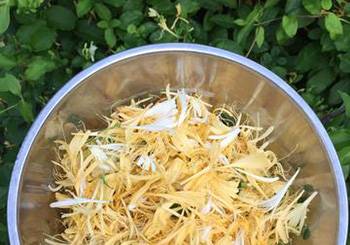
Harvesting occurs in summer when the Honeysuckle is in bloom.
You will probably only be harvesting flowers and, possibly, young leaves. Simply remove the end of the stalks that bear the newest leaves and the flowers using a sharp pair of secateurs.
Alternatively, you can gently pick individual flowers only using your fingers or a suitable pair of scissors.
What Honeysuckle is Good For And The Natural Remedies Made From It
Lonicera japonica flowers are not only edible but contain calcium, potassium, and magnesium. These compounds and other active ingredients are the reason why many centuries of anecdotal evidence claim that Honeysuckle has the following properties: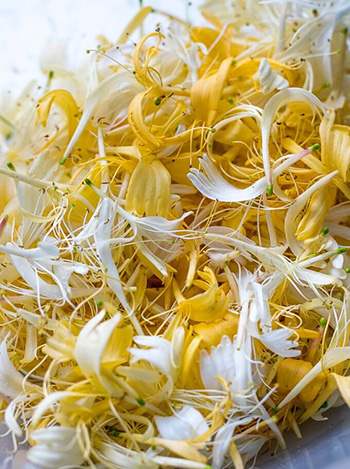
- Antiviral
- Antibacterial
- Immune boosting
- Astringent
- Blood sugar reducing
- Anti-inflammatory
As a result, this plant can be helpful for:
- Certain bacterial or viral infections such as sore throats and colds / ‘flu
- Inflammatory issues such as arthritis and rheumatism
- Inflammation in the digestive system such as enteritis
- Urinary disorders
- Blood sugar imbalances.
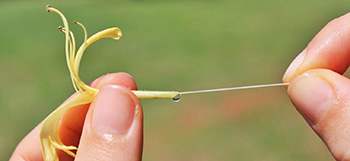
It should be noted that there is still little research into Honeysuckle and therefore there is a marked lack of clinical evidence to support the anecdotal health claims.
On a lighter note, the sweet nectar, sucked from the flower tube, is a fun snack for kids and the blooms can be boiled in water to make syrups.
What Parts of The Plant Are Used In Remedies?
The flowers are most often used with the leaves also including in preparations such as tea or topical application remedies.
A DIY Honeysuckle Recipe
There is a remedy that has been made from Japanese Honeysuckle for thousands of years: Honeysuckle Tea. It is easy to make, tastes good, and offers health benefits. Today we look at a version that is ideal for the summer months.
It is made from flowers only, preferably fresh ones. Ensure that, if you are foraging, you harvest from Japanese Honeysuckle or – at the very least – one of the other edible varieties!
Ingredients
- 2 cups freshly picked and open flowers
- 2 ½ cups of boiling water
- Mint sprig (optional)
Method
- Pick the flowers right at the base so that the nectar is retained
- Ensure you discard all leaves, stalks, and berries
- Place the flowers into a jar or pitcher

- Pour the water over the flowers
- Stir the mixture gently
- Leave the liquid steeping at room temperature for 2 – 3 hours
- Refrigerate the container overnight

- Strain the liquid through a fine strainer, cheesecloth, or kitchen muslin
- Pour the liquid over ice in a glass (and garnish if you wish)

Do not add sugar to this tea as it is sweet by nature. You can add a slice of lemon before you refrigerate the tea to reduce the sweetness a little.
Dosage
As with most remedies, including natural and plant-based ones, how much can be safely used depends on several factors including:
- The type of preparation
- The ailment to be treated
- The individual’s overall state of health
- The person’s age
- Any medications the individual is currently on
- The medical conditions the patient suffers from.
As indicated earlier, the absence of clinical studies means that there is currently little to no scientific data about Honeysuckle doses. It’s, therefore, wisest to follow the instructions provided by your healthcare provider and/or the product manufacturer.
How To Preserve This Plant
There are two possibilities when it comes to preserving Honeysuckle flowers:
Drying:
- Gently spread the fresh flowers out over a drying screen or a suitable cloth

Leave the blooms in a warm, well-ventilated area but out of the sun
- Move the flowers around twice a day to ensure all of them are exposed to air
- Once they are 100% dry (crunchy to the touch), place them in airtight, labeled containers
- Store the containers in a cool, dry area
- If the color or smell changes, or there are signs of mold or mildew, do not use the flowers.
Medicinal Seeds: Last Minute Deal
Tincturing: A ratio of 3:1 flower to alcohol
- Place fresh flowers into a container
- Pour >80% proof alcohol over the flowers
- Stir gently but well
- Close the container
- Place it in a dark cool place for 4 to 6 weeks
- Stir it every 3 or 4 days
- If the tincture changes color or smell, do not use it.
Correctly dried and stored flowers should have a shelf-life of about 6 months. Tinctures can last up to 18 months as the alcohol acts as a preservative.
What Plants Resemble Honeysuckle?
One can confuse different species of Honeysuckle, although flower color and shape are usually the best – and easiest – way to differentiate species. The details provided earlier should help you to identify Japanese Honeysuckle specifically.
The common name “Woodbine” can cause some confusion as there are other plants that are called Woodbine:
| Feature | Japanese HoneysuckleLonicera japonica | WoodbineLonicera periclymenum | Yellow jessamineGelsemium sempervirens |
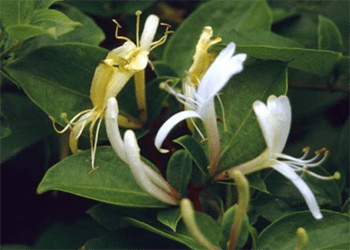 |
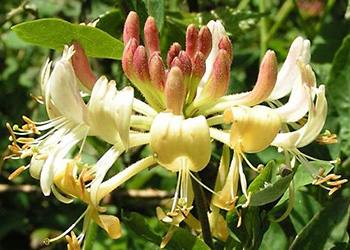 |
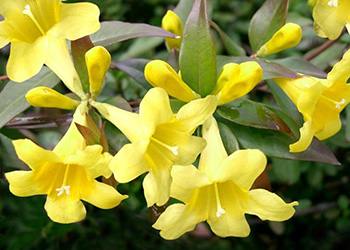 | |
| Size | 30 feet / 9 meters high | 23 feet / 7 meters high | 20 feet / 6 m meters high |
| Leaves | Oval, light green turning darker, deciduous | Lanceolate, shiny, light green, deciduous | Lanceolate, shiny, dark green, evergreen |
| Flowers | Paired, white or pale-yellow, petals flare out forming two curled lips | Tubular, creamy white or yellowish, pink, or red flush on outside, form clusters | Trumpet-shaped, bright yellow, may have orange center |
| Berries | Black, round, shiny | Black, round, shiny | None (forms dry, brown seed capsules) |
| Toxic | Berries | Berries | Whole Plant highly toxic |
When these plants are in bloom one is highly unlikely to mistake them for each other. Both L. periclymenum and L. japonica are edible, so it is only Gelsemium sempervirens that poses a risk due to its toxicity. Never harvest or forage from a plant if you are unsure.
Warning And Cautions
While Japanese Honeysuckle is generally considered safe, there are some cautions:
- Individuals who have plant allergies
- Pregnant and breastfeeding women
- People on blood-thinning medication
- Anybody who is scheduled for surgery or has recently had a procedure.
When ingested, this plant can cause some mild gastric discomfort for some people. It should also be noted that safety when it comes to long term use for some conditions and individuals is unknown.
As with any remedy, plant-based or otherwise, check with your healthcare practitioner before you start using it. Finally, all parts of these creepers are highly toxic to dogs so do not plant one if you have a dog.
You may also like:
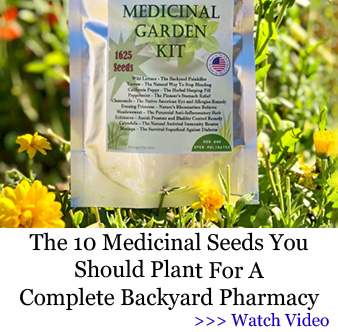 Homemade Adaptogenic Bars With Ashwagandha
Homemade Adaptogenic Bars With Ashwagandha
Similar to Morphine: The Best Natural Painkiller that Grows in Your Backyard (Video)
Dandelion Root Infused Honey for Immunity



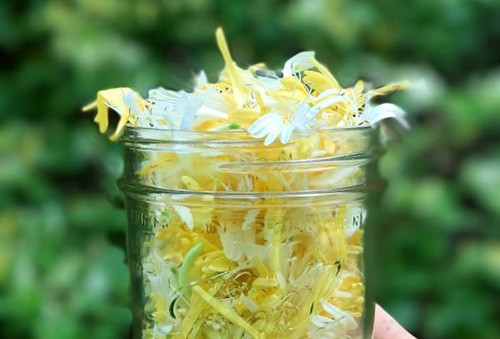
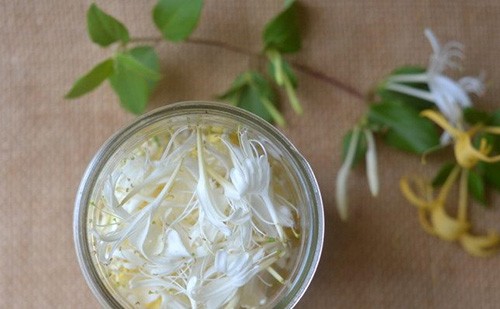
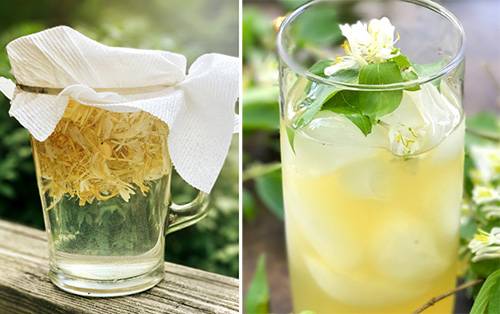
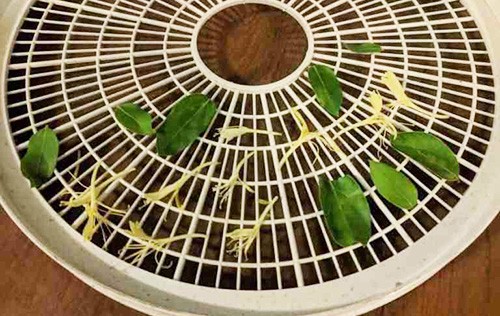
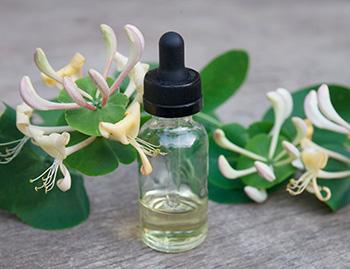
I am a little confused. Only the three mention Honeysuckles are edible? We have the orange variety. Is it not safe? We are i Missouri
Hi Leslie,
As mentioned at the beginning of the article, there are hundreds of species of Honeysuckle (Lonicera). Orange Honeysuckle is included in the edible varieties, but this article focuses on the most common and – importantly – the primary medicinal Honeysuckle: Lonicera japonica, known as Japanese or Chinese Honeysuckle.
God bless!
Just now did some research. Deciduous flame azaleas which we call Bush honeysuckle, is not a member of the honeysuckle family, but the rhododendron family and is highly toxic, all parts. The blooms look similar, but not edible at all.
So interesting and worthy knowledgeable lessons and ideas , THANK YOU FOR WONDERFUL EFFORTS AND HELP OF INFORMATION REMAIN BLESSED!
Hi Farah,
Thank you so much for your feedback. We really appreciate it.
Stay safe and all the best!